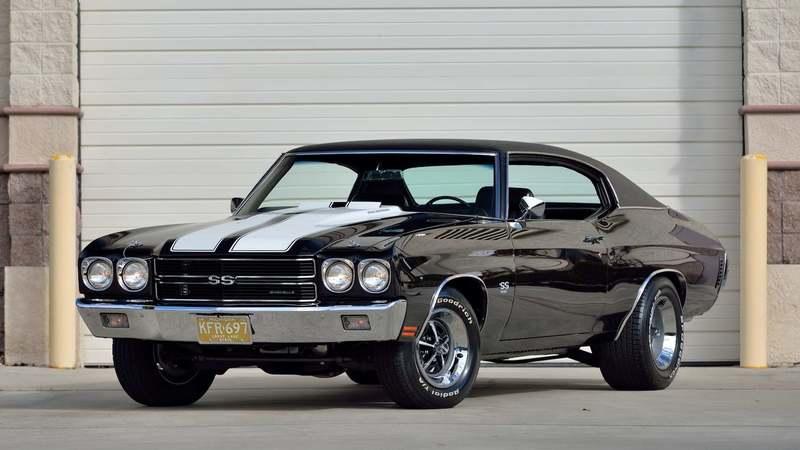
Driving a muscle car is the best way to see its glory. There are many Pontiac models available to you if you're looking for fun and speed. These classic American cars are the Pontiac GTO (oldsmobile 442 convertible), Firebird Trans Am (firebird trans am), and Catalina 421. Here's what makes these cars so appealing. This article will give you a great overview of these models.
Pontiac GTO
Pontiac has a long history of making classic muscle cars, and the GTO is no exception. The GTO was a sports coupe designed by John DeLorean, who would later go on to design the cars seen in Back to the Future. Although GM initially didn't anticipate the GTO being a commercial success it proved to be a big hit. With an impressive power output of over 400 horsepower, the GTO is one of the best-selling cars of all time.

Oldsmobile 442 convertible
This 1965 Oldsmobile convertible 442 convertible is rare. It has matching numbers and a number of nice features. The original car was manual-steering but the previous owner has restored it to its former glory 10 years earlier. It features a Posi rear end, a 400 ci engine and front and rear sway bar. A rare find like this can fetch a premium of almost $300,000.
Firebird Trans Am
The Pontiac Firebird Trans Am was a mid-sized car produced by Pontiac from 1967 to 1971. It has a 7.5-liter engine that produces 335 bhp, and 480lb-ft. The Firebird and Camaro were both intended to compete with the Ford Mustang in the pony car segment.
Catalina 421
One prime example is the power of the engine's 421 engine, which was found in Pontiac muscle cars during the 1960s. It was equipped with an aluminium intake manifold. Mickey Thompson pistons and a solid-lifter camshaft. The engine produced 410 horsepower and weighed three thousand thirty-eightlbs. The 440 was paired with dual four-barrel carburetors and a heavy-duty rotating assembly. It also had a lightweight flywheel and an aluminum intake manifold. The Catalina 421 was equipped an aluminum tail section, an aluminum intake manifold, and a Carter AFB carburator.

Bonneville
Both the Pontiac Bonneville (and Catalina) were canceled following 1981's model year. Sales were already falling and many car buyers switched to fuel-efficient compact cars after the second energy crisis. In addition to the canceled models, Pontiac also discontinued the 301 engine. Instead, Pontiac began using Chevrolet engines. These cars are the final models manufactured by GM.
FAQ
How do I prepare to be a mechanic apprentice?
It is important to have an understanding of what you are going into. You should be familiar with the mechanics of cars, and how they work. This will make it easy to find the right place to start your first day in the garage.
You will also need to learn how to fix simple problems like tires and broken lights.
These lessons will help you to identify and fix problems.
You'll also need to know how different parts fit together to put them back together again.
Finally, it is important to know how tools can be used safely and efficiently.
All these things will help you to become a competent mechanic.
What qualifications is required to become an mechanic?
A series of exams is necessary to become a mechanic. These include:
-
A general knowledge test
-
Practical exam
-
An apprenticeship test
These tests are meant to help you grasp the fundamentals of mechanical engineering and physics, before you begin your journey as a mechanic.
These tests will allow you to be a mechanic once you have passed them. You will still need to complete an apprenticeship. This will involve trade training.
To fully understand the mechanics of vehicle repairs, you'll need workshops and classes. Additionally, you will need to work with experienced mechanics.
To be a successful mechanic, you will need to have a high degree of concentration and attention. You will need to pay careful attention to every aspect when repairing vehicles.
To be a successful mechanic, you will need patience and perseverance. If you don’t enjoy following instructions, this might not be the right career path.
However, if you love cars or enjoy working on them, you might be happy in this field.
Is it difficult to become a mechanic apprentice
It's not easy, but you learn fast, and there are many opportunities for advancement.
You must have patience and perseverance. You will also need to be able fix cars, trucks and motorcycles.
Customers and family members can put a lot pressure on you. They want you to succeed. You should not feel pressured into making difficult decisions.
If you enjoy fixing cars, it could be a great career choice. This is a job that allows you to earn a decent income and grow your business.
Perhaps you prefer a different route. Consider becoming a technician.
This means that you can use your technical knowledge to help other workers. You could help technicians troubleshoot problems or teach them new techniques.
Another option is to become a service advisor. As a service advisor, you will provide assistance and advice to customers as they bring their car to a garage.
Your choice is based on what you choose to do. There are many choices available and you can choose what suits you best.
How long does it take you to become a great mechanic?
Expert mechanics take years of practice and extensive experience. The best way to learn how to repair cars is by working under the supervision of a professional mechanic.
You will be required to spend time at a car garage learning as much as you can about cars. Mechanical engineering books will be required to learn about mechanics and design.
Auto school is also required.
The most important thing is to start early. It doesn't matter if you're old or not to study automotive technology. Start studying automotive technology now to become a mechanic.
What is the difference?
They are both similar, but not identical. Both a mechanic and an automotive technician can repair cars.
A mechanic should be able to do simple tasks quickly and have good manual dexterity. A mechanic must be able diagnose and fix problems quickly and accurately.
An automotive technician is required to have more technical knowledge than a mechanic. They must be able and able to read blueprints as well as use tools like drills or wrenches.
They should also be capable of safely performing complex procedures. They must also be familiarized in different types and electrical systems.
They should also be able understand how different parts interact.
A mechanic typically earns less than an automotive technician. Both careers have many options.
What length is an automotive mechanic apprenticeship?
It takes three years to complete an apprenticeship as an automotive mechanic. It includes two years of school and two years as an apprentice. The first year is used to learn all aspects of the trade including safety procedures and theory. You'll also learn the safe and efficient use of tools during this first year. After the completion of the first year, you will spend another year on the job training. Here you'll gain valuable experience in different trades. These years will offer you the opportunity to attend formal classes.
The final year of this program is spent in obtaining qualifications and becoming certified in your field. These include NVQs, which are obtained after passing industry-specific exams. In addition, there are HNCs (Higher National Certificates) that cover general subjects such as management, business administration, and customer service. Finally, there are City & Guilds certificates that are offered for those who wish to become qualified in certain trades.
What kind of car mechanic jobs exists?
There are three major areas of employment that car mechanics work in:
-
Automotive repair shops
-
Dealerships
-
Independent garages
Automotive repair shops
Most people think of this as the first step to becoming a mechanic. It's actually the easiest way to start. You have two options: work in an existing shop or open your own.
If you are interested in working at a shop you will need to apply for membership to a union. Once you're accepted into the union, you'll receive training from the union.
After the training, you will be ready to go and start your job.
You will need to register if your garage is going to be open. After you have registered, you will need to meet certain standards.
You will receive a license to run your garage once you have registered.
Your license allows you to sell spare parts and make minor repairs. It will not allow you to repair major engine problems.
As well as selling spare parts you will need to offer advice and direction to customers.
Dealership jobs
Most dealerships only employ mechanics who have a specific skill set. They might specialize in one area, such as brakes and tires.
However, dealerships may also employ general mechanics who are able to handle all aspects related to car repairs.
These positions may require applicants to complete specific training before being allowed on the job. Employers can then choose the best candidates for their job.
Some dealerships will even hire graduates right out of university. These graduates have no difficulty learning about cars because they already know the basics and principles of mechanical engineering.
Independent garages
Independent garages aren't associated with any particular dealership. Instead, they tend to focus on providing high-quality service.
Independent garages have the ability to afford higher wages, as they aren’t associated with any one company. Because these jobs don't have to be associated with any company, they can generally offer better wages than dealerships.
Independent garages can be just as good places to work, but this does not mean they are better. Many business owners prefer to own their businesses and not delegate the responsibility to others.
You might find yourself working long hours but having no control over what happens in the day.
It is also possible to expect lower wages than you would if working at a dealer.
You can switch jobs easily. To work at a dealership you will need to contact your employer to see if he is open to the idea of hiring you.
You could also apply directly to an owner of a garage if that's what you want.
The bad news is that finding a new job isn't always easy. Many other factors can also influence the amount you earn.
You might also consider the vehicle type you repair, and whether extra labor is charged.
Statistics
- Apprentice mechanics earn significantly less hourly than mechanics who have completed training, with a median wage of approximately $14.50 an hour, according to PayScale. (jobhero.com)
- According to the BLS, total auto technician employment is expected to exceed 705,000 by 2030. (uti.edu)
- There were 749,900 jobs available for automotive service technicians and mechanics in 2016, which is expected to grow by six percent through 2026. (jobhero.com)
External Links
How To
How to correctly diagnose your vehicle for repairs
You should first examine the symptoms your car is showing to determine if it requires repairs. These steps will help you diagnose your car properly.
-
Check engine lights. You should inspect the dashboard lights, such as the engine light indicator and the oil pressure gauge. Also, check the battery light indicator. If any of them have been flashing for several days, it may mean something is wrong with your vehicle.
-
Take a look at the treads. If the tires are worn out, they could cause problems with handling and braking. The treads of the wheels should be inspected as well. They should be clean and smooth. To do this, remove the wheels and take them out. A flashlight can be used to check how worn the treads are.
-
You should always monitor the level brake fluid. You must keep track on the level of brake fluid in your vehicle. This helps ensure that your brakes operate properly. Low brake fluid levels could cause your brakes to fail when you apply pressure.
-
Test the suspension system. The suspension system in vehicles absorbs vibrations and shocks. It gives you better control and allows for smoother accelerations and decelerations. You might notice a wobbly feeling or uncontrollable shaking in your vehicle if it has a problem with its suspension. You can test if your vehicle has a suspension problem by putting weight on either the front or back axle to see how it moves.
-
Examine the steering column. Steering columns are used to connect the steering wheel to the rest of the vehicle's components. Steering columns can be damaged by accidents. If yours feels loose or shaky, you should replace it.
-
The exhaust pipe should be observed. The exhaust pipes are responsible for moving gases from the combustion chamber into the atmosphere. Your cabin will be effected if your exhaust pipe cracks or leaks. Additionally, your tailpipe should be fixed immediately if it is bent.
-
Check under the hood. Take a look underneath the hood to find any strange or unusual items. Fluids could be leaking from your engine. In addition, if you notice an unusual smell coming from your engine compartment, you should contact a professional technician.
-
It is important to inspect the air filter. The vehicle's outside environment may cause the air filter to collect dust and debris. A dirty air filter causes your vehicle to run poorly. Replace your air filter regularly.
-
Check the fan belt. The fan belt that connects your vehicle to the transmission is called the engine fan belt. If the fanbel breaks, your engine won't turn. The process of replacing the belt is straightforward. You only need a screwdriver or pliers to replace your belt.
-
Make sure you inspect the radiator hoses and hoses. The radiatorhose carries water from your radiator to the engine. It can crack or become damaged and leak hot liquid onto an engine. To repair the leaky hose, all you need is a pair if needle-nosepliers.
-
You should inspect the windshield wipers. Windshield wipers use electricity to wipe away rain and snow. If they stop working, streaks could be left on your glass. Change the washer fluid to fix the problem.
-
You should inspect the cables. The battery cables provide power for the electrical systems in your car. Make sure you disconnect the negative cable before replacing batteries. Failure to do so can damage your alternator.
-
Be sure to check your headlights. The headlights provide illumination for the road ahead. It can lead to poor visibility if they aren't working properly. To check if the bulbs have gone out, you can inspect them.
-
Check the lights. Lights warn other drivers when you approach them at night. You could be distracted and cause an accident if one does not work.
-
Inspect your brakes. Brakes will reduce the speed of your car in case of an accident. If your brakes aren't working properly, you may lose control and crash into other cars.
-
Check the oil regularly. Your engine will stay lubricated by the oil. It prevents metal parts from rusting too quickly. It is recommended to change the oil once a month.